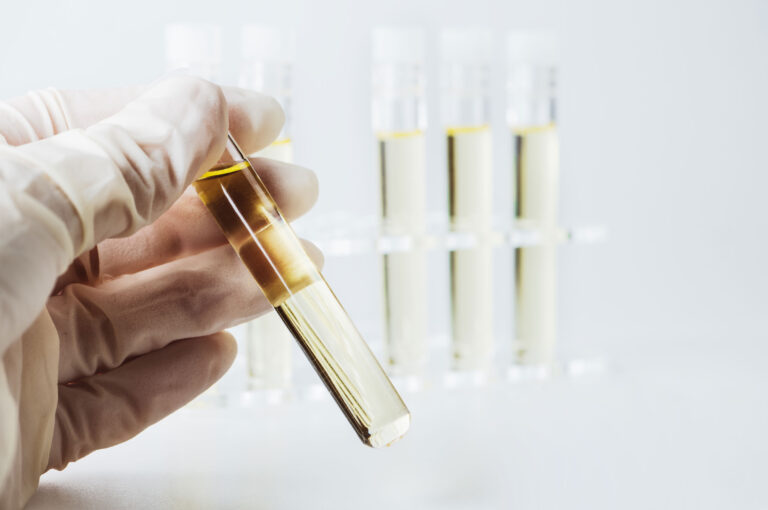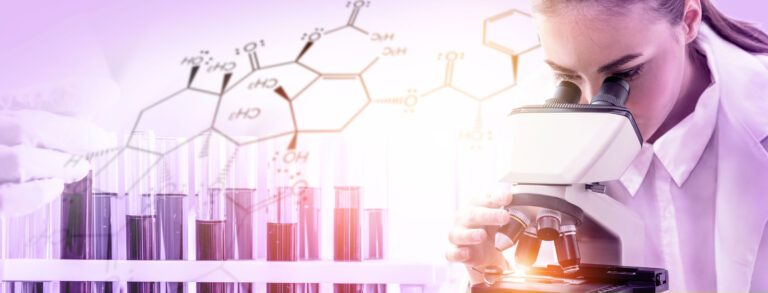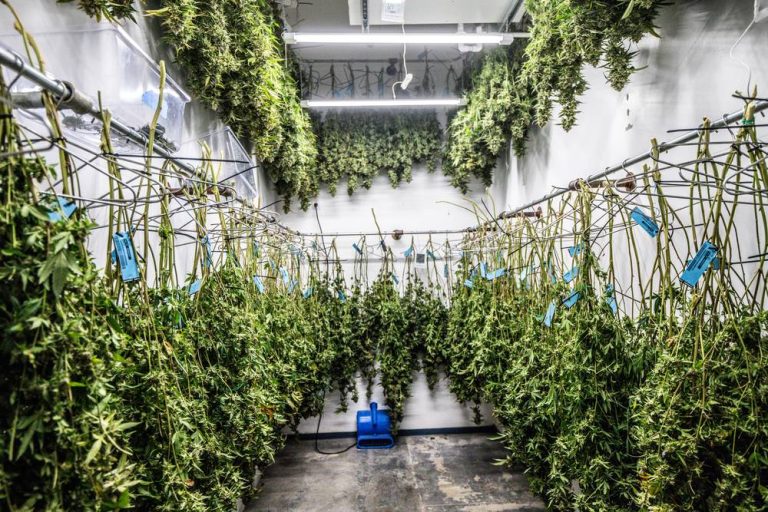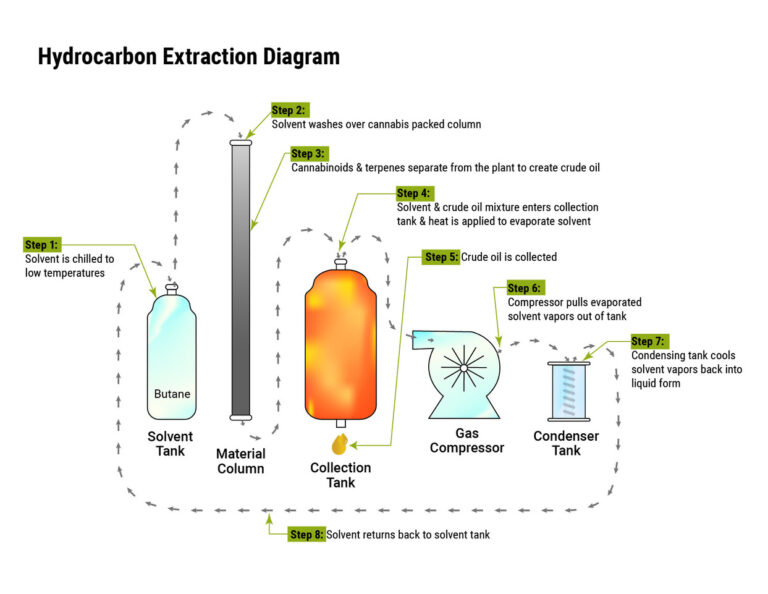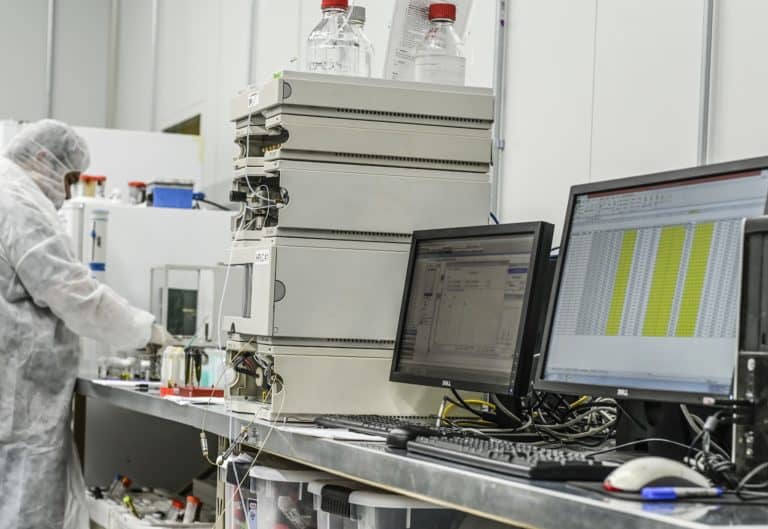Understanding Wiped Film Evaporators
Overview
A wiped film evaporator (WFE), or thin film evaporator, is a specialized piece of equipment that separates and concentrates components from a liquid mixture using evaporation. It is especially beneficial for processing heat-sensitive, viscous, or thermally degradable materials.
Applications
Wiped film evaporators are used to separate, purify, and concentrate liquids in many industries. Their efficiency at evaporating sensitive or volatile materials makes them indispensable in many processes. Including but not limited to:
Pharmaceutical: Purifies active ingredients, recovers solvents, and processes sensitive compounds like vitamins and nutraceuticals without product degradation.
Cannabis and Hemp: Distills cannabinoids like THC or DBC to concentrate them and produce high-purity extracts.
Food and Beverage: Refines essential oils, concentrates flavors, and purifies edible oils like fish or seed oils.
Chemical: Separates heat-sensitive chemicals, purifies fine chemicals, and removes solvents from polymers.
Cosmetic and Personal Care: Purifies botanical extracts and oils while removing odors and impurities for skincare and cosmetic products.
How Wiped Film Evaporators Work
Components and Accessories
Drive Unit and Rotor with Wiper Blades: The drive unit powers a rotor with wiper blades that spread the liquid into an even, thin film onto the heated surface.
Heating Jacket: This jacket surrounds the evaporator body and provides even heat. It typically uses steam, hot oil, or electricity to control the temperature precisely.
Internal Condenser: This is positioned inside the evaporator, rapidly condensing the evaporated vapors.
Vacuum System: This system creates a deep vacuum to reduce boiling points, enabling gentler processing of volatile or heat-sensitive material.
Feed and Discharge Ports: Dedicated inlets for the liquid mixture and outlets for concentrated residue and condensed vapor.
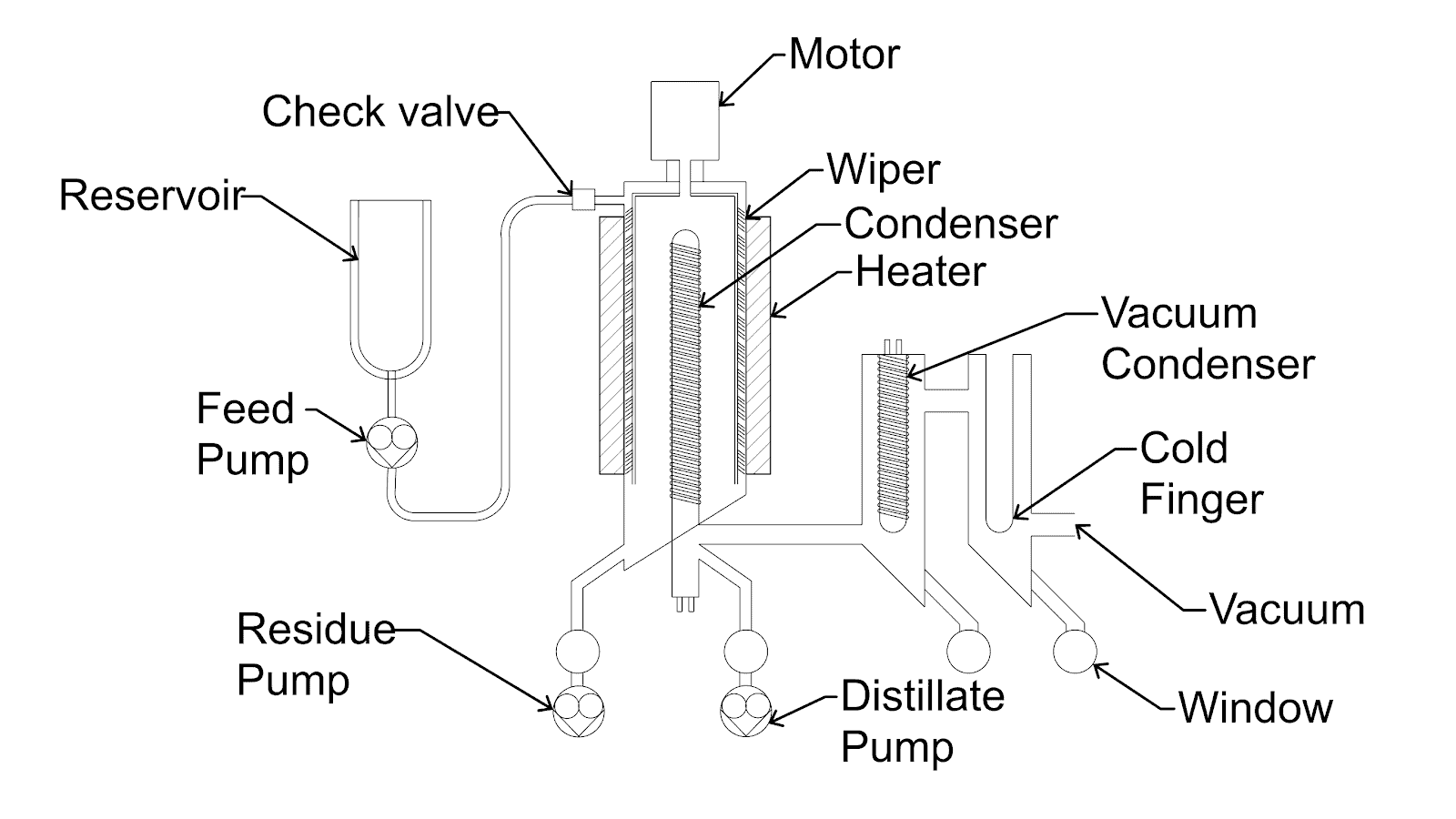
Operating Process
Feed Introduction: The liquid mixture enters the feed port and is transferred onto the heated surface.
Thin Film Formation: The wiper blades spread the liquid evenly into a thin film, maximizing surface contact with the heated wall and ensuring rapid heat transfer and evaporation.
Evaporation and Condensation: The volatile components (components with a lower boiling point) evaporate while the non-volatile residues remain. The vaporized components are directed to the internal condenser, where they are cooled and collected as liquid.
Residue Discharge: The concentrated, non-volatile residue exits separately through its dedicated outlet.
Advantages of Wiped Film Evaporators
The WFE has become the preferred method of separating and concentrating materials due to its several unique advantages over other evaporator systems.
Efficiency in Processing Heat-Sensitive Products
The WFE uses a vacuum to significantly reduce the boiling points of the material being processed. This allows heat-sensitive products like pharmaceuticals, cannabinoids, essential oils, etc., to be processed without degradation. The vacuum system allows liquids with high boiling points, such as viscous oils or fats, to be efficiently processed without extreme temperatures.
Increased Heat Transfer And Evaporation Rates
The wiped film evaporator uses wipers to spread the liquid into a thin layer on the heated surface, allowing the material to be heated quickly and evenly. Because the liquid is spread so thin, it evaporates much faster than other evaporator systems, making the WFE much more efficient, saving time, and ensuring consistent performance.
Cost-Effectiveness
Operating at lower temperatures under vacuum reduces energy consumption compared to other evaporator systems that require higher heat inputs. Additionally, the gentle process of the WFE allows for minimal loss or damage of high-value, sensitive products, resulting in higher yield and profitability.
extraktLAB’s clearSTILL Design and Technical Features
extraktLAB’s clearSTILL 400 and clearSTILL 200 are the best wiped film evaporators on the market, designed for efficient, high-purity distillation of heat-sensitive products. These advanced systems feature a robust design, innovative technology, and precise automation for optimized performance.
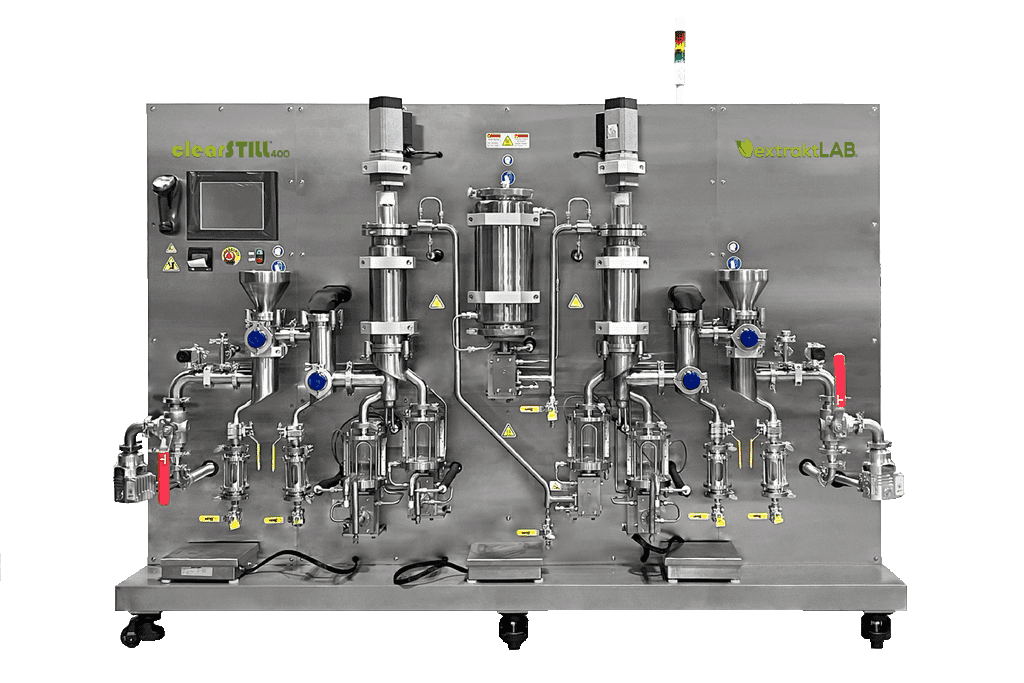
Material Selection
The clearSTILL is constructed with pharmaceutical-grade stainless steel for durability, corrosion resistance, and GMP compliance. Its optimized design ensures efficient heat transfer and easy cleaning.
Design Variations
clearSTILL 400
The clearSTILL 400 has a dual-stage system. It performs primary separation and fine distillation in a single unit, enabling high throughput.
clearSTILL 200
The clearSTILL 200 uses a single-stage design. It is ideal for smaller operations or R&D, offering precise distillation in a compact unit.
Technical Features
Efficient Wiper System: Creates a thin film for an even rapid heat transfer, minimizing product degradation.
Advanced Heating and Cooling: Heating jackets and internal condensers maximize the evaporation condensation rates.
Automation: Easy-to-use touchscreen control for monitoring temperature, vacuum, and feed rates.
Upgrade Your Process
At extraktLAB, our wiped film evaporator is the best on the market. With superior efficiency and precision, our clearSTILL will deliver exceptional results for your business. Contact us today.
Contact Us To Get Started Today


